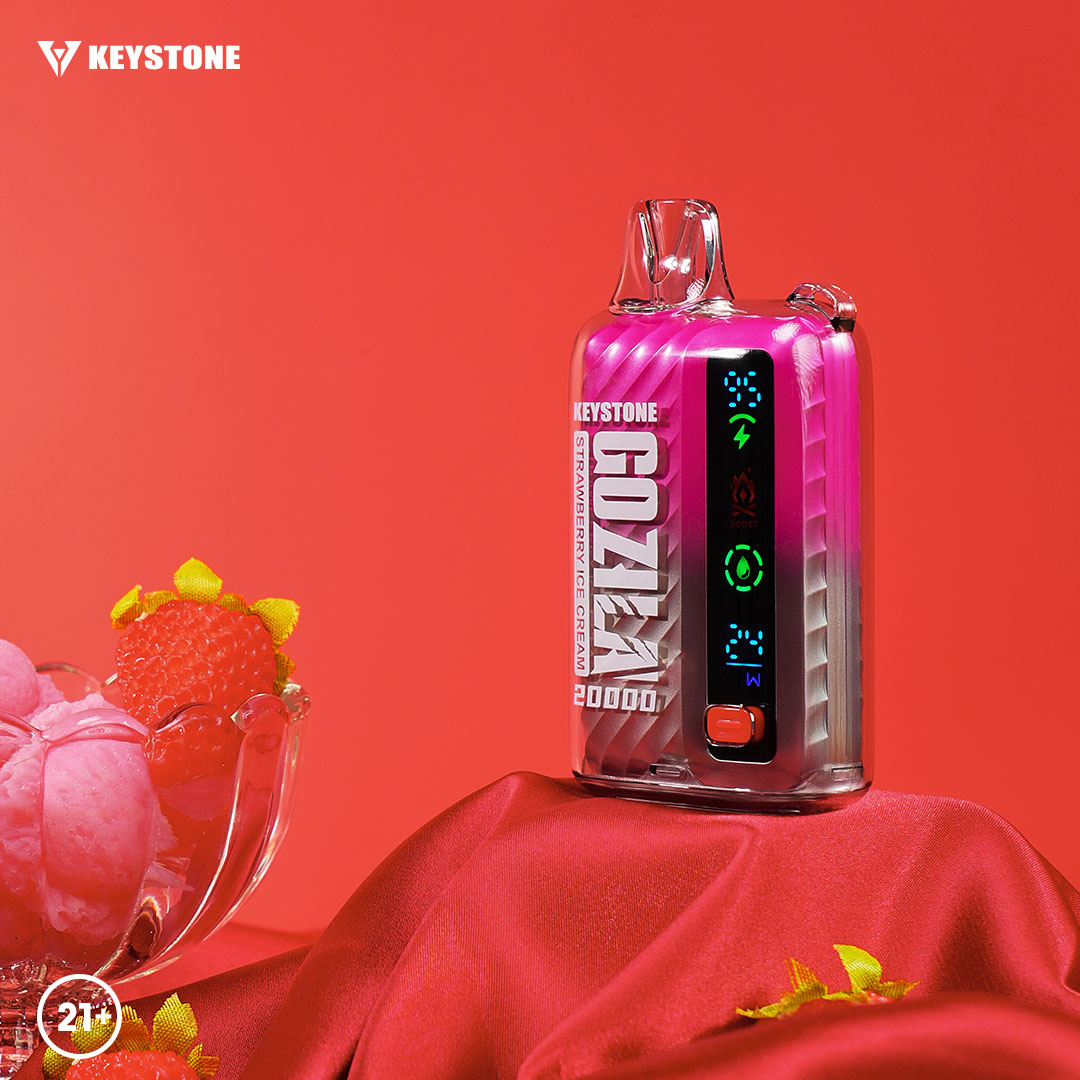WARNING: This product contains nicotine. Nicotine is an addictive chemical.
In the fast-paced world of vaping, disposable vapes have carved out a significant niche, offering convenience and simplicity to users seeking a no-fuss vaping experience. These compact, user-friendly devices are designed for single-use, providing a hassle-free alternative to the more complex, refillable vaping systems. However, the very nature of disposable vapes means that each device has a limited lifespan, dictated by the quantity of e-liquid it contains and the battery’s power capacity. As such, knowing when your disposable vape is nearing the end of its life is crucial to maintaining a seamless and enjoyable vaping experience. This guide will explore the telltale signs that indicate when your disposable vape is almost empty, ensuring you’re never left in the lurch and can anticipate the need for a replacement. From understanding how these devices work to recognizing the subtle changes in performance, we’ll arm you with the knowledge to use your disposable vape to its fullest potential, right up to its final puff.
The gradual waning of flavor intensity and vapor thickness in a disposable vape is a telling sign that the device is approaching its end. This noticeable decline happens as the remaining e-liquid becomes scarce, leaving the atomizer with less substance to convert into vapor. Initially, this change may be subtle, perhaps perceived as a slightly less vibrant taste or a thinner cloud of vapor with each inhale. However, as the e-liquid continues to diminish, these changes become more pronounced, serving as a clear indicator that the reservoir is nearing emptiness. For enthusiasts who relish the rich flavors and full-bodied vapor that disposable vapes offer, this decline can significantly diminish the overall enjoyment and satisfaction derived from vaping.
This reduction in vapor production and flavor richness not only impacts the sensory experience but also signals the efficiency of the device’s internal mechanics. The atomizer, which is central to the vaping process, relies on a consistent supply of e-liquid to maintain optimal performance. As the level of liquid drops, the atomizer struggles to produce the same quality and quantity of vapor, leading to a less satisfying vaping experience. This gradual decline serves as a natural reminder to users to prepare for a replacement. Understanding this inherent characteristic of disposable vapes can help users manage their expectations and ensure a seamless transition to a new device, maintaining the continuity of their vaping experience.

As the e-liquid in a disposable vape dwindles, not only do the flavor and vapor production suffer, but the characteristic ‘hit’ experienced during inhalation also loses its potency. This is particularly noticeable among users of nicotine-infused e-liquids, where the intensity of the throat hit is a significant part of the vaping experience. The throat hit is that sharp, satisfying sensation at the back of the throat that many smokers and vapers seek, and it’s largely influenced by the concentration of nicotine in the vapor. As the available e-liquid decreases, so does the amount of nicotine that can be vaporized with each puff, leading to a softer, less satisfying hit. This reduction can significantly alter the overall experience for users who rely on this sensation as a cue for satisfaction, making it an important indicator that the vape is running low.
The diminishing throat hit is a subtle yet clear signal that the time to replace the disposable vape is approaching. This weakened sensation is directly tied to the dwindling e-liquid levels, as there’s simply less substance to create the impactful experience users have come to expect. For those accustomed to the immediate feedback of a strong throat hit, its reduction can be a noticeable shift, prompting considerations for a new device. Recognizing this change is crucial for maintaining the desired intensity of the vaping experience, especially for those who view the throat hit as an integral part of their nicotine satisfaction. As such, the decrease in the throat hit serves as a natural indicator, guiding users to timely replace their disposable vape to ensure continuous enjoyment.
The reliability of a disposable vape’s battery plays a pivotal role in its overall performance, and when it begins to falter, it’s a clear sign that the device is reaching the end of its usable life. Designed to match the lifespan of the e-liquid it powers, the battery should, in theory, provide a consistent experience from the first puff to the last. However, real-world factors such as manufacturing variability and individual usage patterns can lead to discrepancies in battery life. When you notice a drop in vapor production that isn’t linked to a dwindling e-liquid supply, it often points to a battery struggling to maintain its charge. This inconsistency can manifest as weaker vapor production or a noticeable decline in the device’s responsiveness, indicating that the vape is on its last legs.
Understanding the finite nature of a disposable vape’s battery can help users anticipate the need for a replacement before the device fails entirely. It’s important to recognize the signs of a weakening battery, separate from the e-liquid depletion, as an indicator of the device’s impending retirement. This awareness can prevent unexpected disruptions in your vaping experience and ensure a timely transition to a new device. As the battery’s performance degrades, so does the quality of the vaping experience, underscoring the importance of monitoring both the e-liquid level and the battery’s consistency for a seamless and enjoyable vaping journey until the very end.

When the level of e-liquid in a disposable vape starts to dwindle, a notable change in the effort required to inhale can be felt. Initially, this alteration in draw resistance might be barely perceptible, manifesting as a slightly harder pull needed to get the same satisfying cloud of vapor. However, as the e-liquid continues to deplete, this resistance can become more pronounced, making each puff feel more laborious. This increased effort not only detracts from the ease of use, which is a hallmark of disposable vapes but also serves as a clear indicator that the device is nearing the end of its usable life. Vapers might find themselves drawing more forcefully or for longer durations to achieve the desired vapor output, signaling that it’s time to consider a replacement.
This change in the vaping experience, characterized by a less smooth and more strenuous draw, is a direct consequence of the reduced e-liquid available to be vaporized. As the liquid reservoir empties, the heating element or atomizer has less material to work with, leading to decreased vapor production. This, in turn, affects the airflow and resistance experienced during inhalation. Users accustomed to the consistent performance of disposable vapes may find this gradual shift towards a harder draw an unmistakable sign that the vape’s lifecycle is coming to an end. Recognizing this sign is crucial for maintaining a satisfactory vaping experience, prompting users to replace their device before the quality of their vaping sessions is compromised.
As a disposable vape approaches the final stages of its lifecycle, its performance can become notably erratic. This intermittent functionality might manifest as the device delivering a satisfactory vaping experience in one instance, only to falter shortly after with minimal or no vapor production. Such unpredictable behavior is typically a result of the e-liquid nearing depletion, compounded by the dwindling power reserve of the built-in battery. The sporadic nature of this performance can be frustrating, especially for users who rely on the consistent output of their vaping device. It’s a clear signal from the vape that it has almost reached its capacity, urging users to prepare for its disposal and replacement.
This inconsistency not only affects the quality of the vaping experience but also serves as an important reminder of the disposable nature of these devices. When a disposable vape begins to operate unreliably, it’s an indication that both the e-liquid and the battery are reaching their end. Recognizing this sign is crucial for users to ensure they responsibly dispose of the device, adhering to local regulations and environmental considerations. It’s also an opportunity to reflect on the use of disposables and possibly explore more sustainable vaping options, such as rechargeable devices that offer a longer lifespan and reduced environmental impact.

The Ultimate Guide On How to Know When Your Disposable Vape Is Almost Empty delves into the critical indicators that signal the impending end of a disposable vape’s lifespan. Key signs include a marked reduction in flavor intensity and vapor production, a less pronounced throat hit, particularly for nicotine vapers, and changes in the device’s draw resistance. Additionally, erratic functionality may point to both low e-liquid levels and a depleting battery. Understanding these signs ensures that users can anticipate the need for a replacement, thereby avoiding any disruption to their vaping experience. The guide emphasizes the importance of recognizing these cues not only for uninterrupted vaping enjoyment but also for promoting responsible disposal practices, underscoring the balance between convenience and environmental consciousness in the world of disposable vapes.
